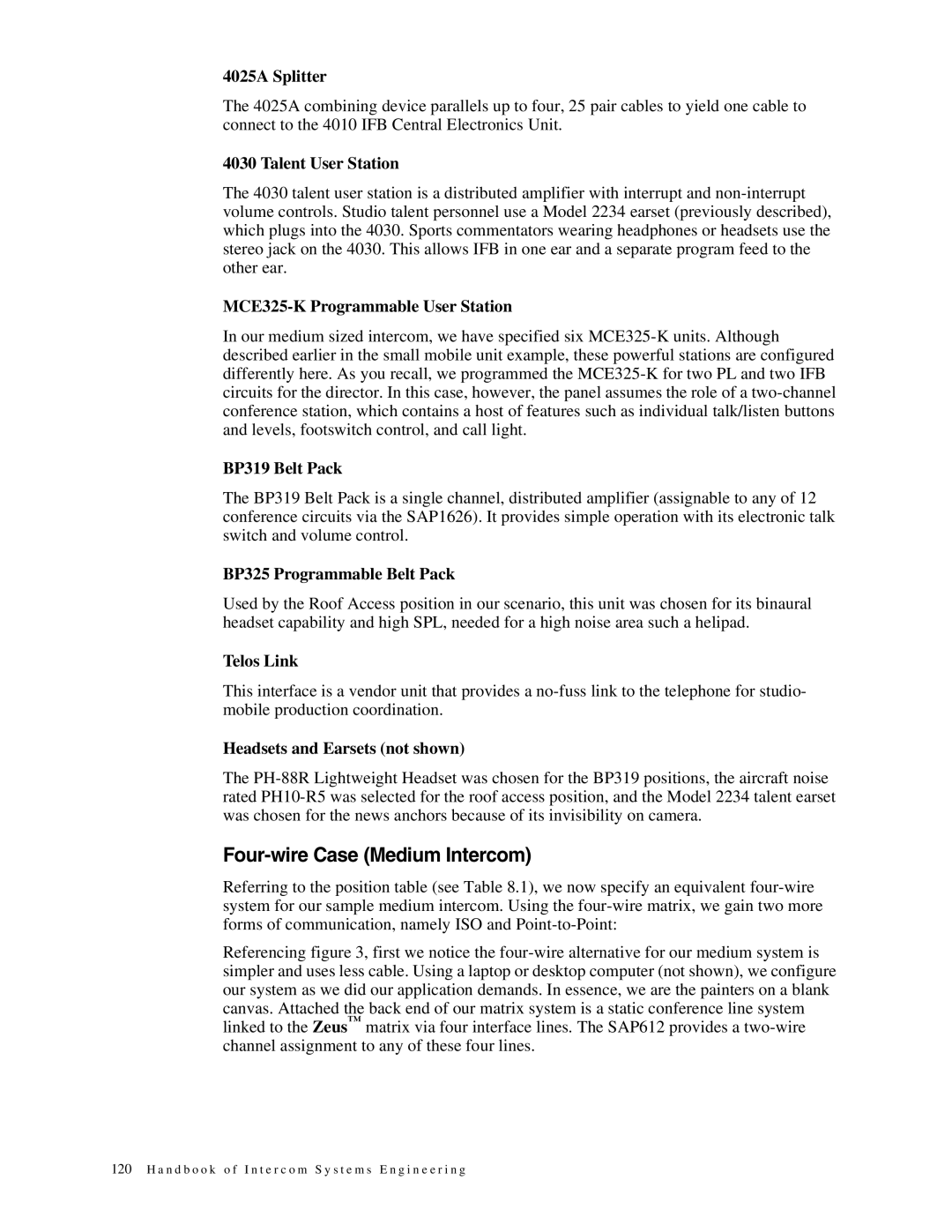4025A Splitter
The 4025A combining device parallels up to four, 25 pair cables to yield one cable to connect to the 4010 IFB Central Electronics Unit.
4030 Talent User Station
The 4030 talent user station is a distributed amplifier with interrupt and non-interrupt volume controls. Studio talent personnel use a Model 2234 earset (previously described), which plugs into the 4030. Sports commentators wearing headphones or headsets use the stereo jack on the 4030. This allows IFB in one ear and a separate program feed to the other ear.
MCE325-K Programmable User Station
In our medium sized intercom, we have specified six MCE325-K units. Although described earlier in the small mobile unit example, these powerful stations are configured differently here. As you recall, we programmed the MCE325-K for two PL and two IFB circuits for the director. In this case, however, the panel assumes the role of a two-channel conference station, which contains a host of features such as individual talk/listen buttons and levels, footswitch control, and call light.
BP319 Belt Pack
The BP319 Belt Pack is a single channel, distributed amplifier (assignable to any of 12 conference circuits via the SAP1626). It provides simple operation with its electronic talk switch and volume control.
BP325 Programmable Belt Pack
Used by the Roof Access position in our scenario, this unit was chosen for its binaural headset capability and high SPL, needed for a high noise area such a helipad.
Telos Link
This interface is a vendor unit that provides a no-fuss link to the telephone for studio- mobile production coordination.
Headsets and Earsets (not shown)
The PH-88R Lightweight Headset was chosen for the BP319 positions, the aircraft noise rated PH10-R5 was selected for the roof access position, and the Model 2234 talent earset was chosen for the news anchors because of its invisibility on camera.
Four-wire Case (Medium Intercom)
Referring to the position table (see Table 8.1), we now specify an equivalent four-wire system for our sample medium intercom. Using the four-wire matrix, we gain two more forms of communication, namely ISO and Point-to-Point:
Referencing figure 3, first we notice the four-wire alternative for our medium system is simpler and uses less cable. Using a laptop or desktop computer (not shown), we configure our system as we did our application demands. In essence, we are the painters on a blank canvas. Attached the back end of our matrix system is a static conference line system linked to the Zeus™ matrix via four interface lines. The SAP612 provides a two-wire channel assignment to any of these four lines.
